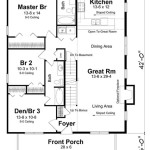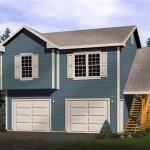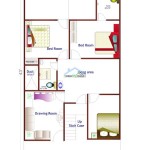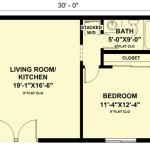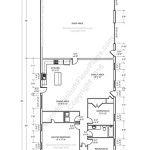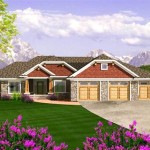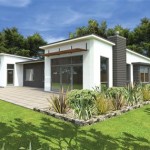One Bedroom Apartment Floor Plans: A Comprehensive Guide
One-bedroom apartment floor plans represent a popular housing choice for individuals, couples, and those seeking a more minimalist lifestyle. Their appeal stems from a combination of affordability, manageability, and convenient functionality. Understanding the different types of one-bedroom apartment layouts and their key features is crucial for making an informed decision when searching for a new home. This article will explore the diverse world of one-bedroom apartment floor plans, examining various layouts, considerations for choosing the right plan, and design strategies to maximize space and comfort.
Understanding Common One-Bedroom Apartment Layout Types
The term "one-bedroom apartment" encompasses a wide range of floor plans that vary significantly in size, shape, and overall design. Familiarizing oneself with common layout types is the first step in identifying a plan that aligns with specific needs and preferences.
The Classic Layout: This is arguably the most common type of one-bedroom apartment. It typically consists of a living room, a separate bedroom, a kitchen (often adjacent to the living room), and a bathroom. The entryway usually opens into the living room, providing a direct connection to the main living space. This layout offers a good degree of separation between the living and sleeping areas, providing privacy and a sense of distinct spaces.
The Open-Concept Layout: Open-concept one-bedroom apartments prioritize a larger, more continuous living space. The kitchen, living room, and sometimes even the dining area flow seamlessly together, creating a more spacious and airy feel. This layout is particularly suitable for individuals who enjoy entertaining or those who prefer a less compartmentalized living environment. However, it may offer less privacy than a classic layout.
The Railroad Layout: This layout, common in older buildings, features rooms arranged linearly, one after the other, like railroad cars. The entrance often leads directly into the living room, followed by the kitchen, bathroom, and finally, the bedroom at the end. While this layout can be efficient in terms of space utilization, it may lack privacy, as residents often have to pass through one room to access another.
The L-Shaped Layout: This layout often features an L-shaped living area that combines the living room and kitchen. The bedroom and bathroom are typically located off a short hallway branching from the main living space. The L-shape helps to define distinct zones within the open living area, creating a sense of separation without completely enclosing the spaces.
The Studio with Alcove Layout: While technically a studio apartment, this layout deserves mention due to its resemblance to a one-bedroom. It features a main living area with a designated alcove, or recessed area, that serves as the bedroom. This alcove provides a degree of separation from the main living space, simulating the feel of a one-bedroom apartment. Curtains or partitions can further enhance privacy in the sleeping area.
Understanding these common layout types provides a framework for evaluating different apartment options and determining which best suits individual requirements.
Key Considerations When Choosing a One-Bedroom Apartment Floor Plan
Selecting the right one-bedroom apartment floor plan involves careful consideration of several factors, including lifestyle, budget, and personal preferences. Prioritizing these factors ensures that the chosen apartment provides a comfortable and functional living environment.
Lifestyle and Needs: How the space will be used is a critical factor. Individuals who work from home may require a dedicated office space, which could influence the preferred layout. Those who frequently entertain may prioritize an open-concept layout with a spacious living area. Conversely, individuals who value privacy and quiet time may prefer a classic layout with distinct rooms. Consideration should also be given to hobbies and activities that require specific spaces or storage.
Size and Square Footage: The size of the apartment, measured in square footage, directly impacts the amount of usable space. A larger square footage generally translates to more room for furniture, storage, and movement. However, larger apartments also tend to be more expensive. It is essential to strike a balance between the desired square footage and budget constraints. Carefully consider how the square footage is distributed throughout the apartment. A well-designed layout can make a smaller apartment feel larger and more functional.
Natural Light and Views: Natural light can significantly impact the ambiance and livability of an apartment. Floor plans with ample windows and desirable orientations (e.g., south-facing) can maximize natural light exposure. Similarly, the presence of a balcony or a desirable view can enhance the overall living experience. Consider how sunlight will impact different areas of the apartment throughout the day. For example, morning sunlight in the bedroom can be a pleasant wake-up call, while afternoon sunlight in the living room can create a warm and inviting atmosphere.
Storage Space: Adequacy of storage space is often overlooked but is crucial for maintaining an organized and clutter-free living environment. Evaluate the amount of closet space, kitchen cabinet space, and any additional storage areas within the apartment. Consider whether the available storage is sufficient for personal belongings and whether additional storage solutions, such as shelving units or storage containers, will be required. Efficient storage solutions can significantly enhance the functionality of a small apartment.
Location and Accessibility: While not directly related to the floor plan itself, the apartment's location and accessibility within the building and neighborhood are important considerations. Factors such as proximity to transportation, amenities, and points of interest should be evaluated. Accessibility features, such as elevators and ramps, may be necessary for individuals with mobility challenges. Considering the surrounding environment can significantly impact the overall quality of life.
By carefully evaluating these factors, individuals can narrow down their options and select a one-bedroom apartment floor plan that meets their specific needs and enhances their overall living experience.
Design Strategies for Maximizing Space and Comfort in a One-Bedroom Apartment
Even with the most thoughtfully chosen floor plan, maximizing space and creating a comfortable living environment in a one-bedroom apartment requires strategic design and efficient use of available space. Implementing clever design solutions can transform a small apartment into a stylish and functional home.
Multifunctional Furniture: Investing in furniture that serves multiple purposes is a key strategy for maximizing space in a small apartment. Examples include sofa beds, storage ottomans, drop-leaf tables, and wall-mounted desks. These items can transform a living room into a guest bedroom or a dining area into a workspace, depending on the need. Prioritizing furniture with built-in storage can further enhance space efficiency.
Vertical Storage Solutions: Utilizing vertical space is an effective way to increase storage capacity without occupying valuable floor space. Shelving units, wall-mounted cabinets, and tall bookcases can provide ample storage for books, decorations, and other belongings. Floating shelves are particularly useful for creating visual interest and maximizing storage in tight spaces. Consider using vertical storage to display personal items and create a more visually appealing environment.
Mirrors: Strategically placed mirrors can create the illusion of more space and reflect natural light throughout the apartment. A large mirror on a wall can visually double the size of a room, while smaller mirrors can be used to brighten up dark corners. Mirrors can also be used to create a focal point or to highlight architectural features.
Color Palette and Lighting: A light and airy color palette can make a small apartment feel more spacious and inviting. Light-colored walls, furniture, and flooring reflect light and create a sense of openness. Conversely, dark colors can make a room feel smaller and more enclosed. In addition to wall color, effective lighting is crucial. Layering different types of lighting, such as ambient lighting, task lighting, and accent lighting, can create a warm and inviting atmosphere. Dimmers allow for adjusting the lighting to suit different moods and activities.
Decluttering and Organization: Regularly decluttering and organizing belongings is essential for maintaining a functional and comfortable living environment in a small apartment. Getting rid of items that are no longer needed or used can create more space and reduce clutter. Implementing a consistent organizational system, such as using storage containers and labeling items, can help to keep belongings organized and easily accessible. Minimizing clutter not only improves the functionality of the apartment but also creates a more relaxing and visually appealing environment.
Defining Zones: In open-concept layouts, it is important to define distinct zones for different activities. This can be achieved through the use of furniture placement, area rugs, screens, or strategically placed shelving units. For example, an area rug can define the living room area, while a bookshelf can separate the living room from the dining area. Creating distinct zones helps to organize the space and create a sense of separation between different activities.
By implementing these design strategies, individuals can transform a one-bedroom apartment into a stylish, functional, and comfortable home, regardless of its size or layout. The key is to prioritize space efficiency, organization, and personal style to create a living environment that reflects individual needs and preferences.

Floor Plans The Central Apartments

Selecting The Right Apartment Floor Plans Apartments For In Heights Houston

One Bedroom Standard Floor Plan Apartments In M Massachusetts Princeton Crossing

Image From Http Www Homedecorlike Com Wp Content Uploads 2024 12 Small One Bedroom Garage Apartment Floor Plans Tiny House

1 Bedroom Apartment Plan Examples

Studio Floor Plans Apartment Small Layout

1 Bedroom Apartment Floor Plans 500 Sf Du Apartments Rates Aspen Gate Apart Small

One Bedroom Floor Plans 1 Apartments Grand Rapids Foote Hills

Free Editable Apartment Floor Plans Edrawmax

Apartments 1 Bedroom Floor Plan Palm Cove Tropic Boutique Accommodation

